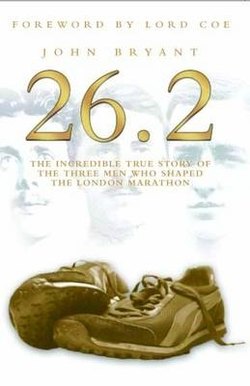Читать книгу 26.2 - The Incredible True Story of the Three Men Who Shaped The London Marathon - John Bryant - Страница 6
На сайте Литреса книга снята с продажи.
PREFACE
ОглавлениеIt is with the greatest of pleasure that I write these few words of introduction to this wonderful narrative of the first Marathon run over what has now become the standard distance of 42,195 metres – the metric equivalent of the imperial 26 miles and 385 yards – which was established one hundred years ago at the 1908 London Olympics. That race also produced the legendary runs of Dorando Pietri and Johnny Hayes and added two more heroes to the annals of our sport.
The story of the Marathon Race is emblematic. Today, just the mention of the word Marathon evokes visions of thousands of runners competing in the big city marathons around the world. The Marathon has become one of the most visible manifestations of the sport of athletics and it is, along with road races run over lesser distances, the greatest participation sport in the world.
For millions of runners around the world this distance has also become magical, the symbol of personal challenge and a sign of individual achievement. Running the Marathon in the company of thousands of other runners, be they elite athletes or fun runners, is now a social phenomenon that is also a wonderful expression of athleticism. Over the years, it has also grown into a major source of funds for a huge range of charitable causes. The Marathon race has become a symbol of peace, of charity and of positive social change, providing the stimulus for hundreds of thousands of people to adopt a healthier lifestyle while creating a sense of community for runners around the world at all levels, irrespective of age or ethnicity, social class or ideologies. This is the same ethos that the whole sport of athletics embraces and which is a fundamental principle of the International Association of Athletics Federations.
The IAAF is extremely appreciative of this development and in 2007 created a dedicated Commission to examine ways in which we, as the world governing body of athletics and all areas of road running, can increase our participation in and support of this most dynamic branch of our sport, a sport that owes much of its success to the dedication and commitment of individual race organisers and the vision of the directors of the city marathons.
From the recognition of world records for road races to the introduction of the IAAF Road Race Label, endorsing the world’s leading road races, and our ongoing work with AIMS (the Association of International Marathons and Distance Races) on the standardisation of the best measurement practices for road races, we will continue to give all our support to the future growth of road running around the world.
Lamine Diack
IAAF President
